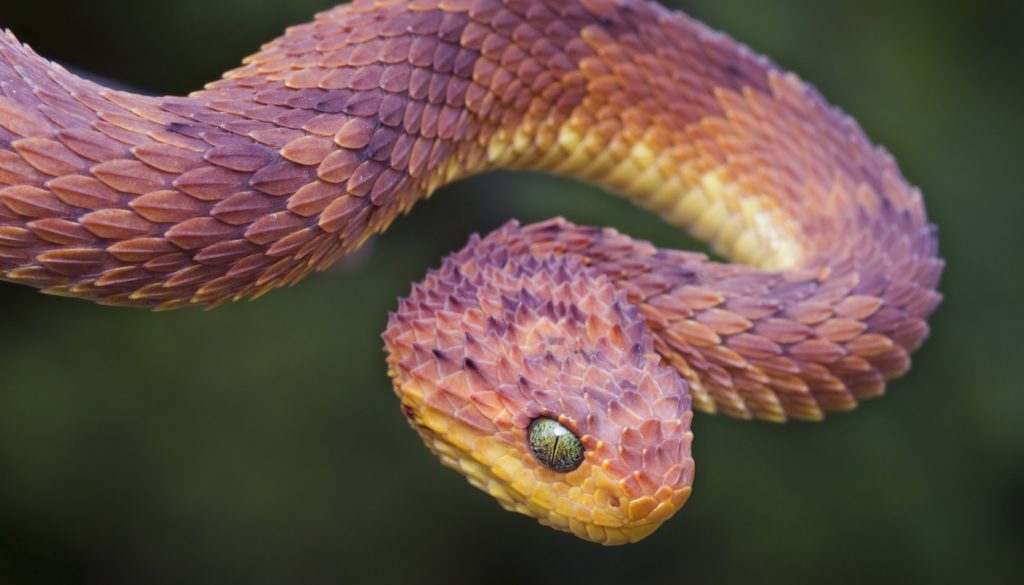People Aren’t Born Afraid of Spiders and Snakes: Fear Is Quickly Learned During Infancy

There’s a reason why Hollywood makes movies like Arachnophobia and Snakes on a Plane: Most people are afraid of spiders and snakes. A new paper published in Current Directions in Psychological Science, a journal of the Association for Psychological Science, reviews research with infants and toddlers and finds that we aren’t born afraid of spiders and snakes, but we can learn these fears very quickly.
One theory about why we fear spiders and snakes is because so many are poisonous; natural selection may have favored people who stayed away from these dangerous critters. Indeed, several studies have found that it’s easier for both humans and monkeys to learn to fear evolutionarily threatening things than non-threatening things. For example, research by Arne Ohman at the Karolinska Institute in Sweden, you can teach people to associate an electric shock with either photos of snakes and spiders or photos of flowers and mushrooms—but the effect lasts a lot longer with the snakes and spiders. Similarly, Susan Mineka’s research (from Northwestern University) shows that monkeys that are raised in the lab aren’t afraid of snakes, but they’ll learn to fear snakes much more readily than flowers or rabbits.
The authors of the Current Directions in Psychological Science paper have studied how infants and toddlers react to scary objects. In one set of experiments, they showed infants as young as 7 months old two videos side by side—one of a snake and one of something non-threatening, such as an elephant. At the same time, the researchers played either a fearful voice or a happy voice. The babies spent more time looking at the snake videos when listening to the fearful voices, but showed no signs of fear themselves.
“What we’re suggesting is that we have these biases to detect things like snakes and spiders really quickly, and to associate them with things that are yucky or bad, like a fearful voice,” says Vanessa LoBue of Rutgers University, who cowrote the paper with David H. Rakison of Carnegie Mellon University and Judy S. DeLoache of the University of Virginia.
In another study, three-year-olds were shown a screen of nine photographs and told to pick out some target item. They identified snakes more quickly than flowers and more quickly than other animals that look similar to snakes, such as frogs and caterpillars. Children who were afraid of snakes were just as fast at picking them out than children who hadn’t developed that fear.
“The original research by Ohman and Mineka with monkeys and adults suggested two important things that make snakes and spiders different,” LoBue says. “One is that we detect them quickly. The other is that we learn to be afraid of them really quickly.” Her research on infants and young children suggests that this is true early in life, too—but not innate, since small children aren’t necessarily afraid of snakes and spiders.





Comments
What is the solution to this issue ?
*Venomous. Sorry, I had to.
I was going to also!
All the research referenced in the article indicates that there is indeed an innate component to our collective fear of spiders and snakes.
I am a herpetologist working with snakes. During almost 3 decades I showed harmless snakes to every human baby I could. Having “experimented” with roughly 50 children aged 3 months to 1 year, my conclusion is that non walking children are attracted to those colubrids, especially those displaying bright colors. By the time they begin to explore by themselves, they start to look at them with care/apprehension just like most monkeys do.
APS regularly opens certain online articles for discussion on our website. Effective February 2021, you must be a logged-in APS member to post comments. By posting a comment, you agree to our Community Guidelines and the display of your profile information, including your name and affiliation. Any opinions, findings, conclusions, or recommendations present in article comments are those of the writers and do not necessarily reflect the views of APS or the article’s author. For more information, please see our Community Guidelines.
Please login with your APS account to comment.